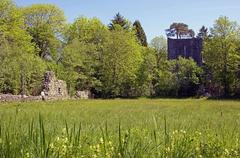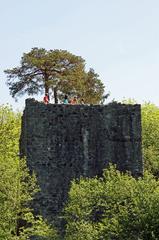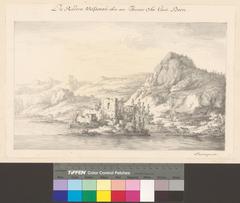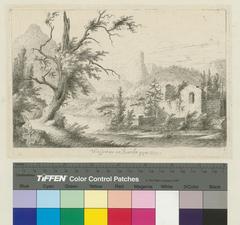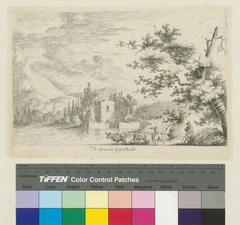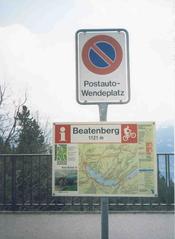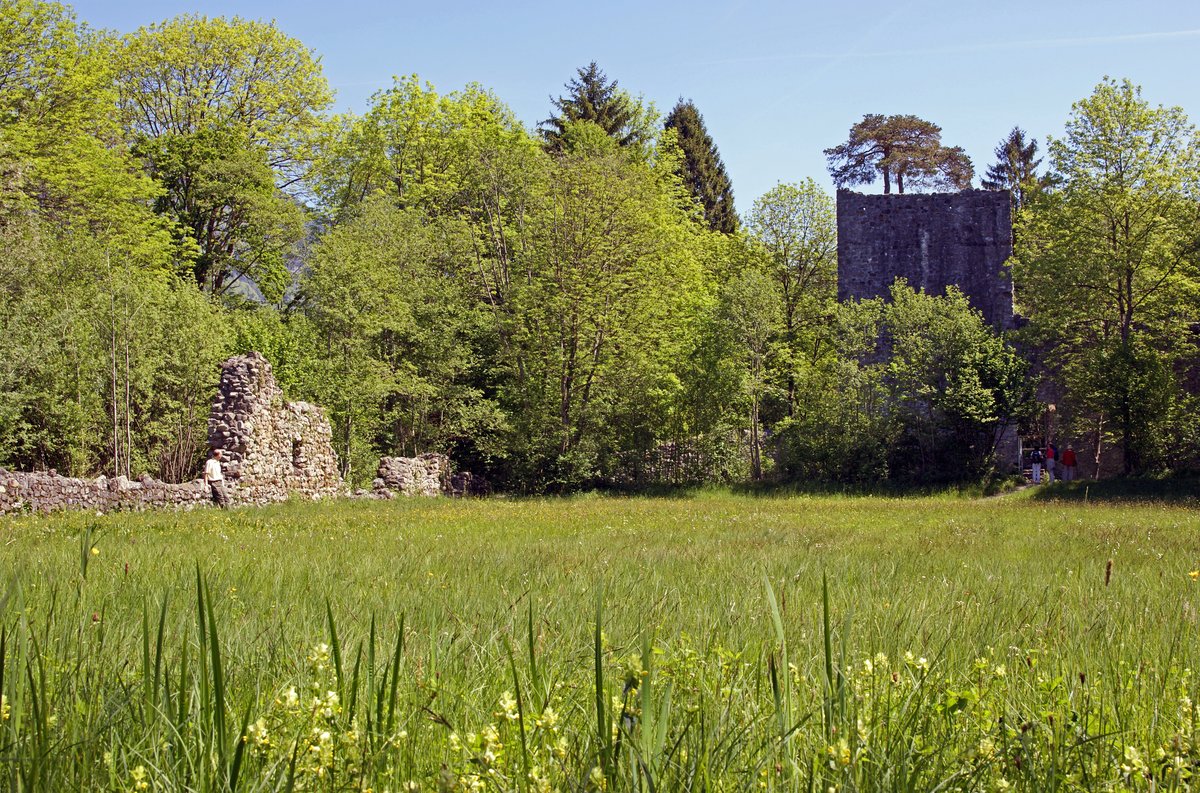
Ruine Weissenau Visiting Hours, Tickets, and Historical Insights
Date: 31/07/2024
Introduction
Nestled in the municipality of Unterseen, within the picturesque region of Interlaken, Switzerland, Ruine Weissenau stands as a testament to medieval history and architecture. This captivating castle ruin, originally constructed in the 13th century, provides a unique glimpse into the past, reflecting the strategic and economic significance of the region during the medieval period. The Ruine Weissenau, often referred to in historical documents as “castrum de wissenowe,” was built to secure and control the flow of goods over the Alpine passes, making it a vital military and economic stronghold (Wikipedia). Over the centuries, the castle witnessed numerous transitions in ownership, from the Freiherren von Wädenswil to the Kloster Interlaken, and eventually to the state of Bern, before falling into disrepair (Spotting History). Today, preservation efforts have ensured that the Ruine Weissenau remains a valuable historical site, offering visitors a tangible connection to the region’s rich cultural heritage. This comprehensive guide aims to provide essential information for anyone planning to visit Ruine Weissenau, including historical context, architectural features, visitor information, travel tips, and nearby attractions.
Table of Contents
- Introduction
- Historical Background of Ruine Weissenau
- Architectural Features
- Visitor Information
- Travel Tips
- Nearby Attractions
- Conclusion
- FAQ
Historical Background of Ruine Weissenau
Origins and Early History
The Ruine Weissenau, originally constructed as a Reichsburg—a type of imperial castle—was built to secure and control the flow of goods over the Alpine passes. This strategic location was crucial for the economic and military interests of the region during the medieval period.
Ownership and Economic Decline
In the 13th century, the castle and its associated harbor were under the ownership of the Freiherren von Wädenswil. The first documented mention of the castle as “castrum de wissenowe” dates back to 1298. However, the economic significance of the castle began to wane with the founding of the nearby town of Unterseen in 1279, leading to its gradual decline.
Transition of Ownership
By 1318, the castle had changed hands when Duke Leopold I of Austria pawned it to the Herren von Weissenburg. It was later sold to the Kloster Interlaken in 1334, marking its importance as both a military stronghold and a religious and economic asset.
Secularization and Abandonment
The secularization of the Kloster Interlaken in 1530 marked the beginning of the end for the castle. The property was transferred to the state of Bern, and the castle was subsequently abandoned. Over the centuries, it fell into disrepair and became a ruin.
Conservation Efforts
Recognizing the historical significance of the Ruine Weissenau, efforts were made to preserve what remained of the castle. In 1981, the ruin was placed under monument protection, and between 1988 and 1989, conservation work was carried out to stabilize and maintain the structure. These efforts have ensured that the Ruine Weissenau remains a valuable historical site for future generations.
Architectural Features
The Ruine Weissenau is noted for being one of the largest and best-preserved castle ruins in the Bernese Oberland. Originally situated on an island at the mouth of the Aare River, where it flows into Lake Thun, this strategic location provided natural defenses and facilitated control over the surrounding waterways.
The Observation Tower
One of the most prominent features of the Ruine Weissenau is its observation tower. Visitors can climb 71 steps to reach the viewing platform, which stands at a height of 14.5 meters. From this vantage point, one can enjoy panoramic views of the Aare River, Lake Thun, and the distant Niesen mountain. The tower not only offers breathtaking scenery but also provides a tangible connection to the castle’s historical role as a lookout and defensive structure.
Visitor Information
Opening Hours and Tickets
The Ruine Weissenau is open year-round, with no specific visiting hours. Admission to the site is free, making it an accessible destination for all visitors. However, donations are welcome to support ongoing conservation efforts.
Accessibility
The Ruine Weissenau is accessible via a short walk from the nearby Neuhaus-Weissenau nature reserve. The site is well-signposted, and there are information boards that provide historical context and details about the castle’s features. The observation tower is a highlight of the visit, offering a unique perspective on the surrounding landscape.
Travel Tips
For those planning to visit the Ruine Weissenau, it is advisable to wear comfortable walking shoes, as the terrain can be uneven. The observation tower offers stunning views, so bringing a camera is recommended. Additionally, visitors should be mindful of the site’s historical significance and respect the conservation efforts that have been made to preserve it.
Nearby Attractions
While visiting the Ruine Weissenau, consider exploring other attractions in the area, such as Lake Thun, the town of Unterseen, and the Neuhaus-Weissenau nature reserve. These destinations offer additional opportunities for sightseeing, hiking, and enjoying the natural beauty of the Bernese Oberland.
Conclusion
The Ruine Weissenau stands as a testament to the rich history of the Bernese Oberland. It is a popular destination for tourists and history enthusiasts who are drawn to its historical significance and scenic beauty. The site is part of the Neuhaus-Weissenau nature reserve, which adds to its appeal as a destination for those interested in both history and nature.
FAQ
What are the opening hours for Ruine Weissenau?
The Ruine Weissenau is open year-round, with no specific visiting hours.
Do I need tickets to visit Ruine Weissenau?
Admission to the site is free, but donations are welcome to support ongoing conservation efforts.
What are the best times to visit Ruine Weissenau?
The Ruine Weissenau is a year-round destination, but spring and summer offer the best weather for exploring the site and enjoying the surrounding scenery.
For more information, you can visit the Wikipedia page dedicated to Ruine Weissenau. By exploring this historical site, visitors can gain a deeper appreciation for the rich history and cultural heritage of the Bernese Oberland. The castle’s ruins offer a glimpse into the past, while the surrounding natural beauty provides a serene and picturesque setting for reflection and exploration.
